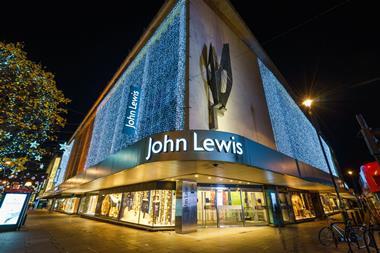One hundred years ago – prior to the industrialisation of retail – every retailer was by definition what I call a ‘customer-keeper’.
They knew each one of their customers well, and their best customers especially well. They understood their preferences and treated each accordingly. And the information enabling that? All held in the shopkeeper’s head.
Of course, that’s relatively easy with a single store. Move into multiple purchase pathways (stores, online, Instagram, among many), and many thousands or even millions of customers, and it’s a different ball game. But retailers’ need to know their customers as well as possible is just as relevant today.
Retailers must look to harness the vast amount of rich customer data to hand, deploy AI and digital technologies to begin to take action at an individual customer level.
Today’s retail CMOs need to think of themselves as ‘customer trading directors’, driving business growth through an obsession with the retention of high-value customers and acquiring new customers with high potential.
Success metrics should centre on an improvement in customer profitability, potential and engagement – irrespective of the channel of purchase. No longer would stores be competing with online for a sale.
Right customer, right strategy
Retailers need to build a set of specific customer strategies that are executed at an individual customer level. Investment and energy in a customer should be linked to a customer’s profit and potential.
In effect, the CMO (or customer trading director in our new world) needs individual customer P&Ls – how much are we willing to spend on this individual based on their current and potential value to us as a business?
So, what does that look like on the ground? One example would an EIP strategy. These are the extremely important people that the retailer cannot afford to lose.
“The challenge facing most retailers is that the customer data they have is not fully linked together”
One high-end fashion retailer – recognising that EIPs deliver most of their profit – identified that delivery experience is critical to EIP retention. For these elite customers, every order they place is managed by an actual human being who is tracking every step, from order to despatch, to make sure that those highest-value customers get the best possible end-to-end service.
Obviously, this cannot be replicated at scale, but the investment makes sense once you view things through the lens of a customer P&L.
Retailers need to deploy multiple insight-driven customer strategies retaining and acquiring high-value customers. But the question is: how to turn strategy into action?
The challenge facing most retailers is that the customer data they have is not fully linked together, is inaccessible and the customer analytics deployed are typically aggregated around traditional segments that were necessary in an analogue world but are now an unhelpful constraint.
Brainpower
What retailers need instead is a ‘customer-keeper brain’ that sits on top of the customer data and uses artificial intelligence, automation and analytics to suggest the next best interaction for every customer. That output is then executed through the most relevant marketing channels.
The customer-keeper brain is a powerful logic layer that is all about acquiring and retaining high-value customers.
Being able to analyse and take action at the level of the individual customer is a game-changer. It can create real customer intimacy, empowering staff in-store to provide a more nuanced and personalised interaction to every customer.
It can unlock profit and also evaluate the rising spend on digital marketing to ensure that retailers are aligning spend with individual customer profit and potential. For instance, they aren’t spending to acquire customers they already own or spending more on acquisition than a customer will ever generate in return.
Conceptually, the customer-keeper brain is not a million miles away from the traditional retailer of many years ago. But this time, it’s operating in real-time, at scale, powered by digital technologies and data management capabilities that are only now available.
It’s ironic that this new digital world is bringing retailers back to some old-fashioned fundamentals. The key to future retail growth? Combining the old-school retail ethos with new technologies to build one-to-one retail relationships with millions of high-value customers.
Retailers should waste no time in making this pivot. Those that don’t are putting their future on the line.































No comments yet